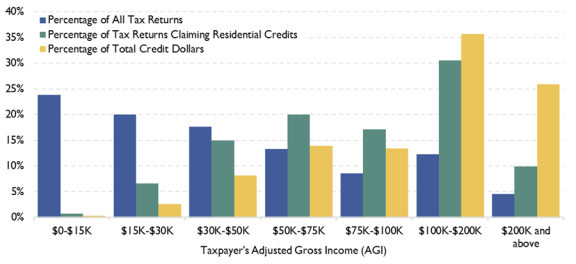Here s what you need to know when filing for tax years 2019 2020 and 2021.
Energy efficiency tax credit 2019 irs.
The residential energy credits are.
You will add up your various energy credits on irs form 5965.
The residential energy efficient property credit and the nonbusiness energy property credit.
Use form 5695 to figure and take your nonbusiness energy property credit and residential energy efficient property credit.
In 2018 and 2019 an individual may claim a credit for 1 10 percent of the cost of qualified energy efficiency improvements and 2 the amount of the residential energy property expenditures paid or incurred by the taxpayer during the taxable year subject to the overall credit limit of 500.
Through the 2020 tax year the federal government offers the nonbusiness energy property credit.
Claim the credits by filing form 5695 with your tax return.
Also use form 5695 to take any residential energy efficient property credit carryforward from 2018 or to carry the unused portion of the credit to 2020.
This includes the solar energy tax credit.
Here are some key facts to know about home energy tax credits.
Irs tax tip 2017 21 february 28 2017.
Who can take the credits you may be able to take the credits if you made energy saving.
Non business energy property credit.
Taxpayers who upgrade their homes to make use of renewable energy may be eligible for a tax credit to offset some of the costs.
Homeowners who made energy efficient improvements to their home can qualify for a federal tax credit but you must meet certain rules.
Taxpayers who made certain energy efficient improvements to their home last year may qualify for a tax credit this year.
Information about form 5695 residential energy credits including recent updates related forms and instructions on how to file.

